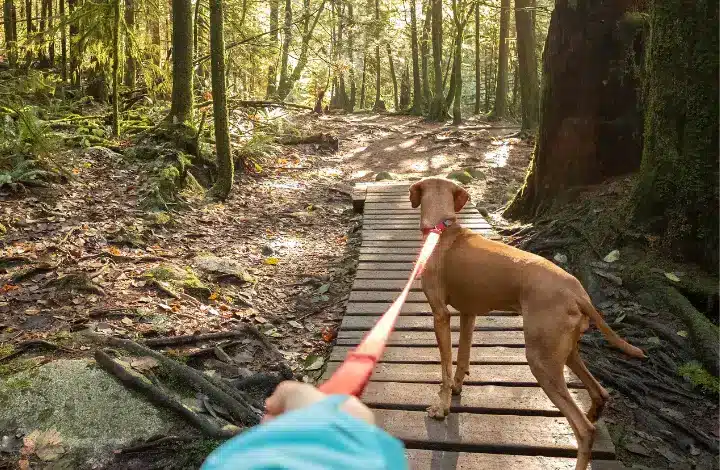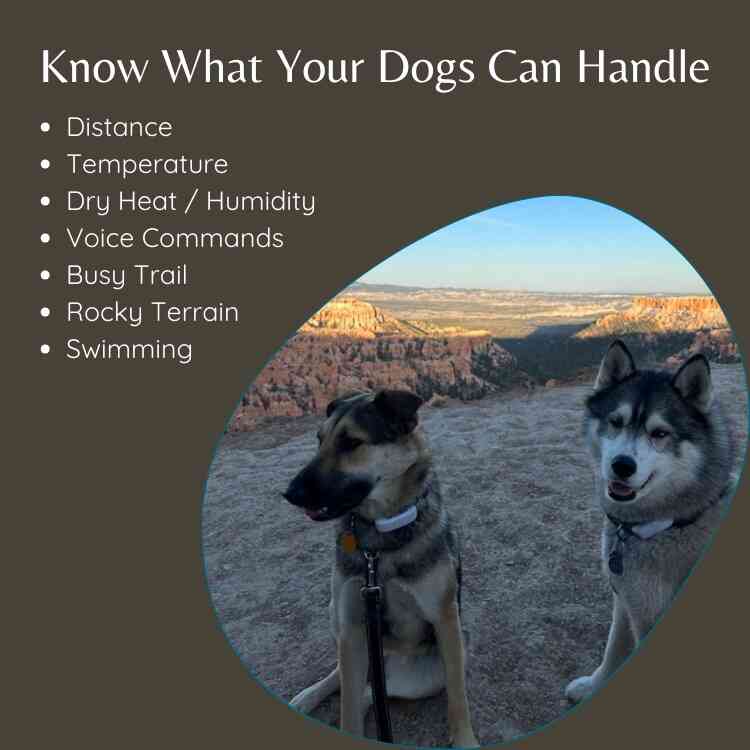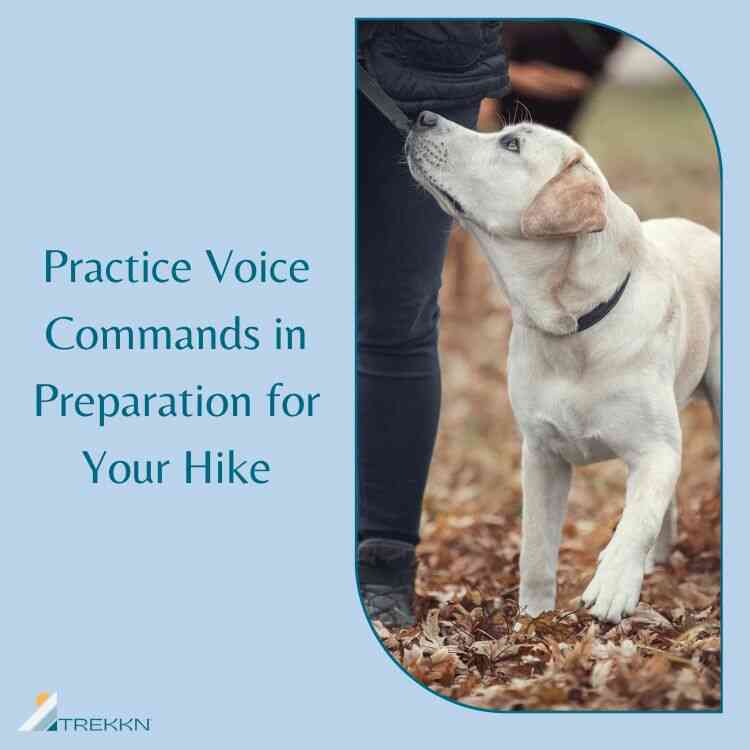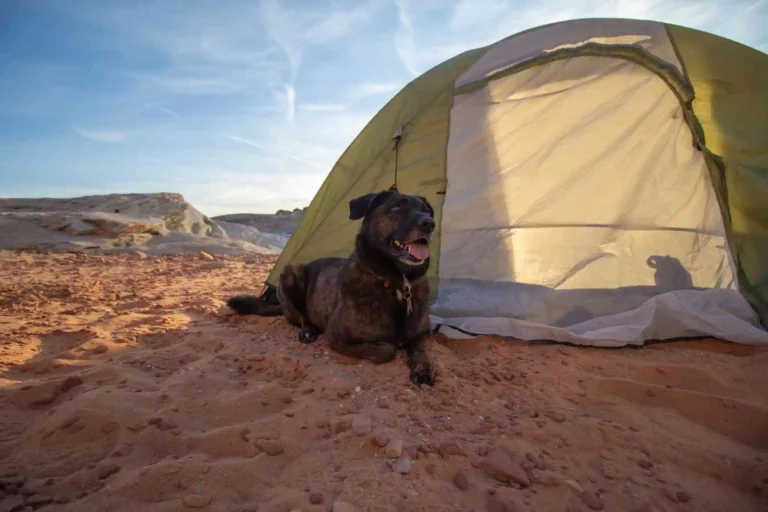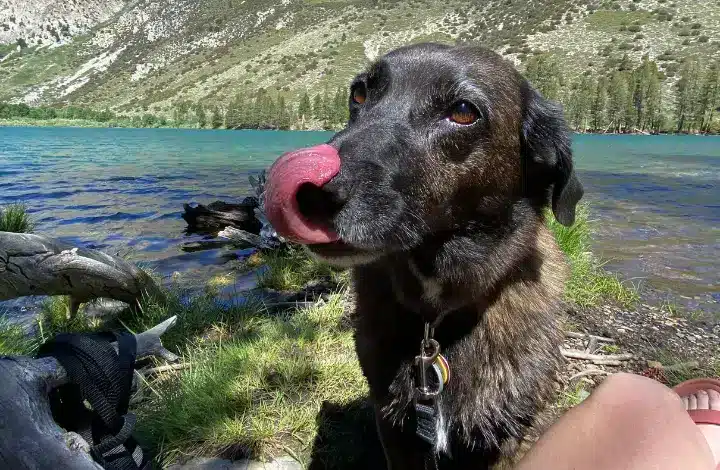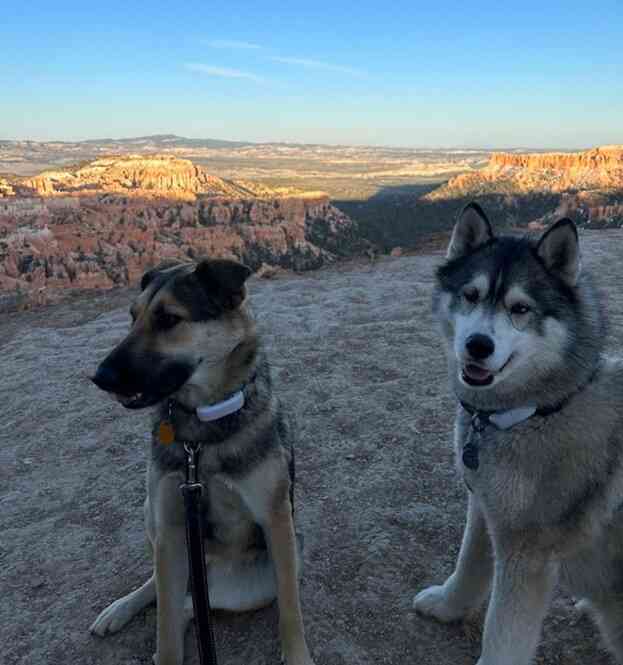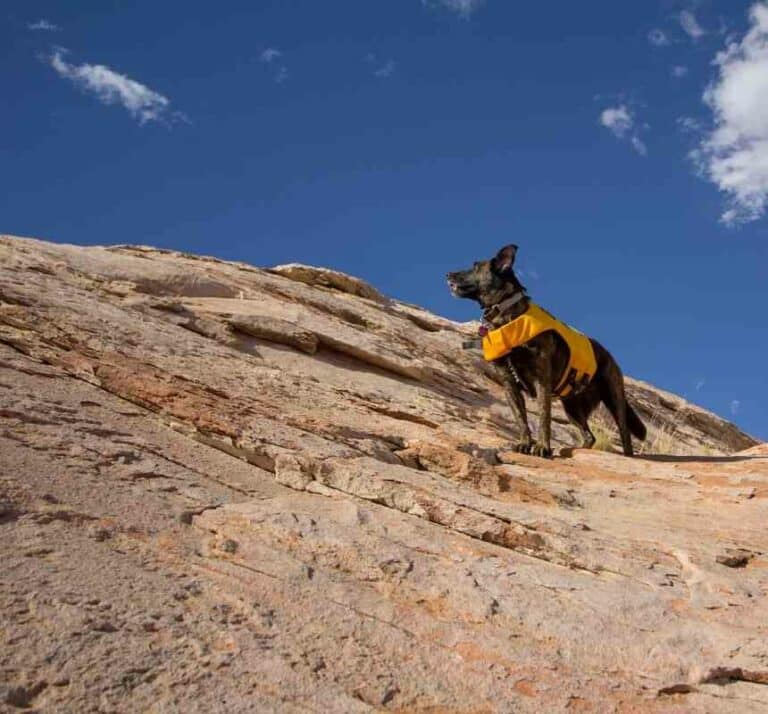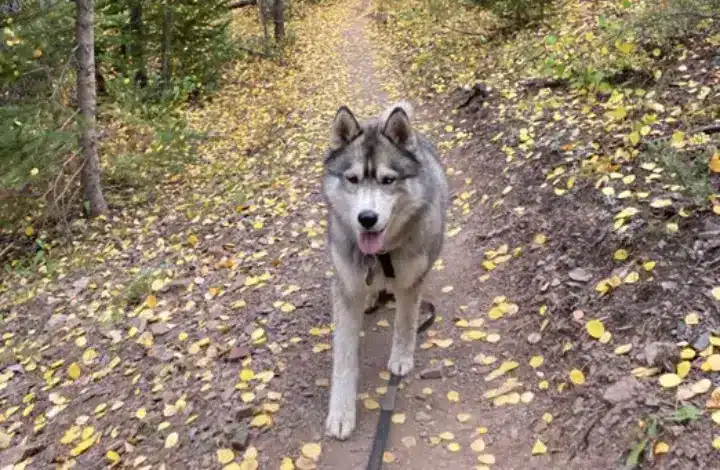Our 7 Must-Know Trail Tips for Hiking with Dogs
One of the best parts about finally getting the beloved four-legged best friend you’ve always wanted is sharing with them the wonders of nature.
We put together this guide to help you kick start those adventures. Based on my time hiking the trails with an amazing shepherd by my side, these are my top tips for hiking with dogs.a
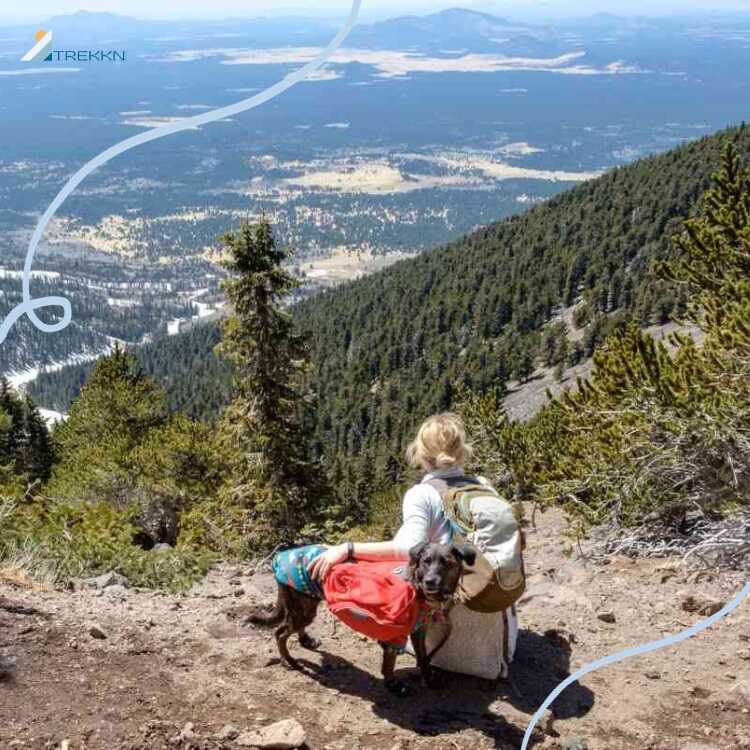
In my opinion, preparation is the key to a successful hiking trip. That’s true whether you’re heading out for a solo adventure, as a couple, or with your dog.
Because while we all know these outdoor adventures can be very rewarding; they can also be quite challenging.
To ensure a safe and comfortable journey for both you and your pup, it’s important to prepare in advance and take some precautions.
Once you’re able to check off each item on the list below with confidence in your ability to support your dog with whatever they need, you will be hitting the trails in no time.
Top Tips for Hiking With Dogs
The first thing a dog parent must take into consideration is the physical capability of their dog. Before planning out a lengthy day hiking or backpacking trip, it’s essential to understand what your dog can and cannot handle.
Know Your Dog’s Capabilities
Some key factors to consider include age, breed, weight, and overall health. Some dogs are much better suited for a strenuous mountain hike than others. You certainly don’t want to find out which category your dog falls into when you’re already deep into the backcountry.
Help Your Dog Build Endurance
Prior to taking your dogs on their maiden hike, go on a series of easier local walks and hikes to gauge their level of physical fitness. As it becomes apparent that they can handle more, increase the distance and difficulty over time.
Easing your dog into hiking in this way will give you and your pup confidence to tackle more challenging and rewarding trails.
Even with this confidence in your pooch, it is still of utmost importance to be aware of your dog’s limits to avoid overexertion and injuries.
Get Your Dog a Checkup
As an extra precaution, take your dog to the vet in advance of your pending outdoor adventure. Having a professional assessment is a great idea.
Give your vet an overview of the trip, including potential hiking distance and a list of plants that may be toxic. Ensure you know what to do if your dog rummages through a patch of poison ivy.
Ask the vet to consider such plans as he assesses the physical health of your dog. There may be recommended vaccinations or other preventative medicines to pack into the wild.
It’s also a good time to check your dog’s paws. Make sure they are healthy and in good shape for traversing dirty, rocky ground. You may also want to ask about pet allergy medications.
Don’t Neglect the Possibility of Anxiety
Remember that both physical exertion and mental stimulation can be tiring for a dog. They can develop anxiety when traveling a long distance from home. Especially as they may be thrust into a very new environment.
Include in your travel plans enough time for pit stops, campsite setup, and undisturbed rest for your pup. It’s always a good idea to spend some quiet time at camp before departing for the trail. Allow your dog to ease into the situation and take in the smells and sounds of open wilderness.
Refresh Obedience Training Exercises
Nature can be unpredictable. In this environment, you don’t want to double down on the unknown by hiking with an unpredictable dog.
Voice Command Dog Obedience is Essential
Before heading out on a trail, ensure your dog understands and reacts to vital obedience commands such as “sit”, stay”, “leave it”, and “come”.
Don’t get me wrong, I am not expecting every dog on the trail to behave perfectly 100% of the time. However, trust me when I say it’s disheartening to see a dog freak out with every passing hiker.
It’s clear these dogs have not received even rudimentary training, which would actually help them remain more calm in new situations. (Unfortunately, it’s also clear their human parents disregarded Tip #1 to know the dog’s capabilities and limitations.)
Maintaining control of your dog at all times is more than a recommendation. It’s more than basic hiking etiquette. It’s really a baseline requirement to ensure everyone is safe. Dog obedience is particularly important when hiking on a busy trail.
Ensure Your Dog Can Socialize Outdoors
Additionally, you should work on general socialization skills to make sure your dog is comfortable around other people and their dogs. Again, do this in advance of that first hiking adventure.
Hiking will typically require you to walk past others, and since trails are usually quite narrow, it is vital that your dog stays calm within such a close proximity.
Confirm Trail Regulations Allow Dogs
Before heading to the trailhead, it is important to find the trail-specific regulations concerning dogs. Not all trails are dog-friendly, and the last thing you want is to be called out by another hiker for breaking the rules.
For some trails, dogs are allowed only if they are on a leash. Others may only allow them during certain times of day. And some parks do not even allow dogs on the trails. This is not something you want to find out upon arrival.
Not All National Parks Allow Dogs on Trails
In U.S. National Parks, for example, dogs are not allowed on trails, even with the use of a leash. Rules such as these are enforced as a safety measure, so always follow restrictions noted on any signage.
It’s best to check ahead. Nobody wants to arrive at a trailhead only to find out their furry buddy is not allowed. Generally you can find the information you need on the park’s website.
Heed the Weather Forecast
Certain weather conditions can drastically impact the viability of taking your dog for a hike. Knowing what conditions you will face out there on the trail is vital.
Adjust Plans for Weather Conditions
For example, on an exceptionally hot day, it would be unwise to hike a trail that has little to no shade. Hot weather can quickly become dangerous for dogs, as they can overheat and become dehydrated very quickly.
Likewise, cold weather can become an uncomfortable problem for your dog.
When thinking about acceptable weather conditions, take your dog’s breed into consideration.
Short-haired dogs are less likely to remain comfortable in low temperatures compared to long-haired, larger dogs. Of course, the reverse is true when the weather heats up.
Pack Appropriate Outdoor Dog Gear
Based on the forecast, pack accordingly. Carry the proper outdoor gear such as dog boots, jackets, water filters, and collapsible dog bowls.
Packing the right gear helps to ensure your dog is both safe and comfortable. It may seem like we’re suggesting a lot of planning.
You may think it’s unnecessary because your dog is so happy just to be by your side. Even with that being true, if it rains, slippery rocks can put your dog at risk of injury.
The right dog booties can also protect against splinters or sharp-edged rocks. Look for boots that are trail-ready and made of durable material, especially on the sole.
Breathable mesh can help keep the paws from getting too hot while hiking.
All the planning and preparation you manage in advance will help ensure you can take your dogs on many amazing hikes for years to come.
Trail-ready boots for dogs protect paws on rough terrain. Available in various sizes and colors.
Carry Plenty of Water and Snacks
Hydration is very important for both you and your dog. Taking your dog on a strenuous hike requires you to bring along an adequate amount of water and healthy snacks.
Keep in mind that your dog will generally need to consume more food and water than they typically would at home. (However, timing is important. Don’t feed dogs a full meal on the trail.)
A general rule for how much water dogs drink is approximately one ounce per pound of body weight, per day. If your dog weighs 60 pounds, you should carry at least 30 ounces of water for a half day hike.
Collapsible Bowls are a Great Hiking Accessory
Make sure to bring along a collapsible bowl, which is easy to store and carry, and also helps ensure your dog drinks clean water.
Collapsible dog bowls are lightweight and include an attached carabiner, making it easy to both store and carry while hiking.
Carrying Too Much Water Beats Not Enough Water
You may be trying to figure out exactly how much water you need to carry so that you avoid lugging around any excess. It’s true, extra weight in your pack is a drag.
But, in my experience, clean water equals peace of mind. That, in turn, allows me to enjoy the serenity of a good hike. When it comes to water, I always err on the side of having too much versus not enough.
I would 100% prefer to carry the extra weight than spend time searching for a water source then waiting for the gravity filter. When it comes to the well-being of our dogs, the old adage is true. Better safe than sorry.
I don’t particularly like my dog to drink from the river. It’s unavoidable; that’s what they do as they run through it. That said, when I offer enough clean water, it reduces the chance of her intentionally drinking from the river or lake and ingesting harmful bacteria.
Dog Snacks on Trail, Dinner at Camp
For dog snacks, bring along some of their favorite, healthy treats. You should never feed your dog a full meal on the trail unless you plan to sit and relax for a couple hours afterward.
Letting a dog exert lots of energy after eating an entire meal can lead to stomach problems.
Mind the Wildlife When Hiking with Dogs
Wild animals can pose a threat to you and your dog. Bears, moose, coyotes, and snakes are just some of the wildlife that hikers (and their dogs) may encounter on the trail.
Always be mindful of your surroundings and keep your dog close. By keeping your dog on a leash, you are ensuring that you have full control over them in case of a surprise.
To prevent surprises, don’t hike in silence. Let the wildlife know you are in the area by making noise. It can be good practice to attach a bear bell to your dog’s collar.
Easily attach to belt, backpack straps, or dog collar/harness with a hook and loop closure to alert wildlife you're in area. Magnet in bag silences bell when not in use.
Wild Animals May React Aggressively to Dogs
Without the proper experience, dogs typically don’t understand that moose may pose a threat. Their first instinct may be to run after the wild animal. (Trust me when I say the moose won’t care if the dog’s intention is to invite it to play.)
As Elissa Slezak, a District Wildlife Manager for Colorado Parks and Wildlife explains, moose react to dogs differently than they do to humans. Dogs resemble wolves, the primary predator of moose, and that triggers defensive or aggressive behavior.
At the 3:10 mark in the following video, it’s noted that some of the most dangerous conflicts between people and moose are triggered by the presence of dogs.
You do not want your dog to approach wildlife under any circumstance. Curb this instinct by securing dogs to a leash and keeping them close.
I am not trying to create undue concern about hiking with your dog. In fact, you need only take simple precautions to help reduce the chance of dangerous wildlife interactions.
Keep dogs leashed to maintain a safe distance from wildlife.
Research Local Wildlife
It is again important to do your research in advance of the expedition. You want to know ahead of time what type of wildlife is in the area.
You should also learn how to identify the signs that wildlife may be nearby while on the trail. And if you do spot any moose, bear, or other wild animals, maintain your distance.
As you observe the animal, also pay attention to their mannerisms and watch for signs that signal aggression.
You can carry certain protective equipment such as noise makers or bear spray. But your first line of defense should be to maintain your distance.
Practice Leave No Trace Principles
As a courtesy to the world around us in general, and your fellow hikers in particular, it is good practice to always pack out your dog’s poop.
Bring enough doggie bags and plan to carry those bags filled with the unmentionables to the end of the trail.
I know, ew! That’s exactly how dozens of other hikers will react if you leave it laying on the side of the trail for them to step around (or on!). So, practice good outdoor etiquette when hiking with dogs and carry it out.
Don’t worry, I can ease your mind about the thought of lugging poop around on your backpack. Use a durable container like the Dog Dumpster. It’s made of a strong silicone with an airtight lid to trap odors.
Magnet trash bin attaches to tailgate or bumper to pack out dog waste.
Sometimes there are composting toilets along trail routes. That makes for a good day; just drop your dog’s waste straight down the chute.
If an unexpected event occurs and you do run out of bags, it can be safe to bury the doggie doo.
Dig a hole (ironically referred to as a “cathole” when used for such a purpose) that is at least 6″ deep and across. Drop those droppings right in and cover it back up.
I have two additional points to make. First, make sure the hole you dig is at least 200 feet away from any natural body of water. And second, don’t leave dog poo bags in the hole. Those bags do not decompose. Especially when it’s deep in a hole without any oxygen to help the decomposition process.
Please remember to practice leave no trace principles.
So, what do you think? Are you ready to take your beloved furry friend on an amazing adventure? I’m sure you’ve got it covered.
Let’s take a moment to summarize our guide of hiking tips to make your planning easy peasy.
Summary: Essential Tips for Hiking with Dogs
Safe travels, friends!

After graduating with a degree in animal behavior, Isabel allowed herself some time to get closer to nature. She took a leap to the European countryside and hiked her way through Switzerland, Italy, and Portugal before returning to the US. It’s clear now she was meant to be an outdoorsy gal as she spends her days camping and hiking the trails along both coasts and cozies up to the campfire with pen and paper to chronicle her travels. TREKKN is fortunate to have her on the team.


